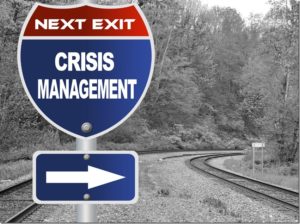The Four Stages Of A Crisis
Editor’s Note: This is the first in a week-long series about crisis communications. These guest posts were written by Jane Jordan-Meier, who recently released her book, “The Four Stages of Highly Effective Crisis Management.” You can read all five articles in this series here and purchase her excellent book here.
If you take a close look at any crisis, you’ll see distinct, predictable patterns in how the media behave. There are four discernible stages, and they are evident in old and new media alike.
Why? Quite simply, we, the reader, listener, viewer, the @toms, @dicks and @harrys, expect a certain narrative to appear at certain times. Research done by Stanford University regarding coverage of 9/11, for example, shows very clearly that “narrative patterns all play out in predictable ways during crisis reporting.”
The readers and the storytellers themselves, perhaps unknowingly, expect to hear, see and read about stories of courage, death defying events, people surviving against odds, and that someone, somewhere can be held accountable for their losses. There has to be an explanation for why the government took so long to respond, or why there was in-fighting, or why it was yet another tale of bad boys behaving badly. We want to know that someone cares and has the determination, conviction and compassion to do something to make sure that the “worst” can never happen again.
Essentially, human beings are story-telling animals. We will stretch, shrink, and squeeze the truth to suit our own experience, our perceptions, our biases, and culture. Once the facts are out there – and that will be at a blistering speed today – we will then dissect the information and pass our own judgments.

THE FOUR STAGES OF A CRISIS
Imagine that each stage of a crisis is symbolized by a light. It goes a little like this:
STAGE ONE
In Stage One, the spotlight is beaming squarely on the incident. This is the “breaking news” stage. “What happened?” is the key question. And the news travels very fast in Stage One to Stage Two – it doesn’t take long for the story to jump the “fire line.”
STAGE TWO
Stage Two is characterized by the focus on the “victims” and the response. The light moves quickly from the incident itself (although new facts will continue to emerge) to the “drama.” How could this have happened? How many people are hurt, missing and/or dead? How is the organization responding? How quickly did the responders get to the scene? The light will shine brightly on the perpetrator – or who we think the perpetrator might be.
This stage is key. This is the make it or break it stage, the reputation forming stage, the stage where the rallying on social media sites, both negative and positive, becomes a focal point.
The spotlight, with widening and growing intensity, points at the organization and persons who appear to be at the center of the storm. It will roam around and catch whoever will talk about what’s just happened. Experts start to appear on CNN, victims start talking in-depth about their experiences, and the organization starts to give its side of the story. And it can last at least 72 hours.
STAGE THREE
Stage Three is the one best avoided, although inevitably we all want to go there – yes, the Blame, Finger Pointing Stage. Think back to the devastating oil spill in the Gulf of Mexico when the executives of the three companies at heart of the massive oil spill were severely chastised over attempts to shift the blame to each other.
In this Finger Pointing Stage, everyone has an opinion about you, your product, your organization, your industry, even your country (ask Iran) – lots of “woulda, coulda, shoulda.”
Stage Three is all about blame with the key question focused on “why.” The spotlight is more like a floodlight. Your crisis is beamed everywhere.
STAGE FOUR
The light begins to dim in Stage Four which is the fallout/resolution stage. The spotlight now dims, but can easily be turned to full glare again if you slip up, or something similar happens in your industry. Your crisis is perpetually in print, on Google, in Wikipedia – searchable and discoverable. Your “sin” will be for everyone to see forever – you can’t take it back.
Typically, this stage marks the end of the crisis; there is some resolution. There might be a funeral, a government inquiry, or a Senate hearing. Your product goes back on the shelf, workers go back to the plant, victims return to their homes.
The evidence is plain for all to see. Just watch the media coverage, follow the tweets, notice the Facebook posts, and you will soon see the narratives played out in very predictable patterns, with very predictable questions. That’s the good news. And the bad? Well, it happens at lightning speed, so be prepared to make a statement within an hour of something happening.
Your reputation depends on it.
Click here to read all five articles in this special crisis series.
Click here to order Jane’s excellent book.



Hi Brad,
The link at the bottom to the “five articles” appears to be flawed. There’s no substance on that page.
Thank you for letting me know! I am correcting the links right now.
Brad